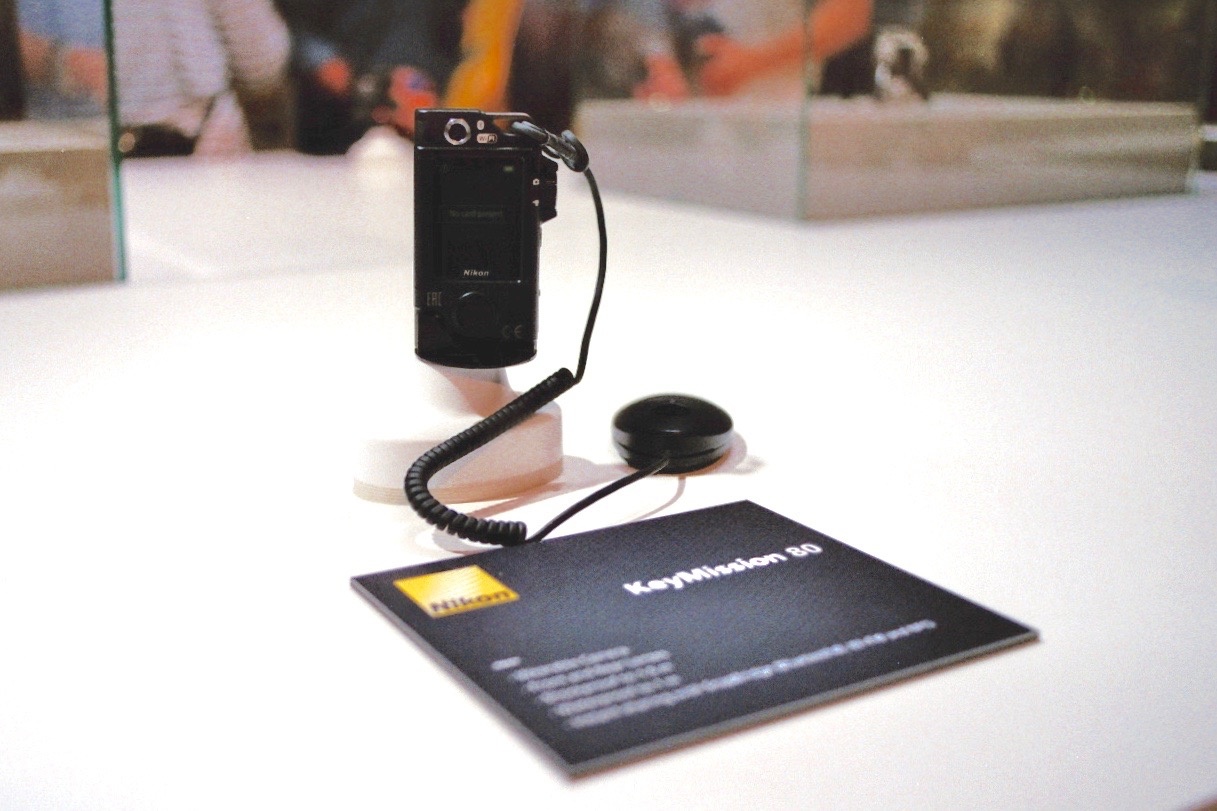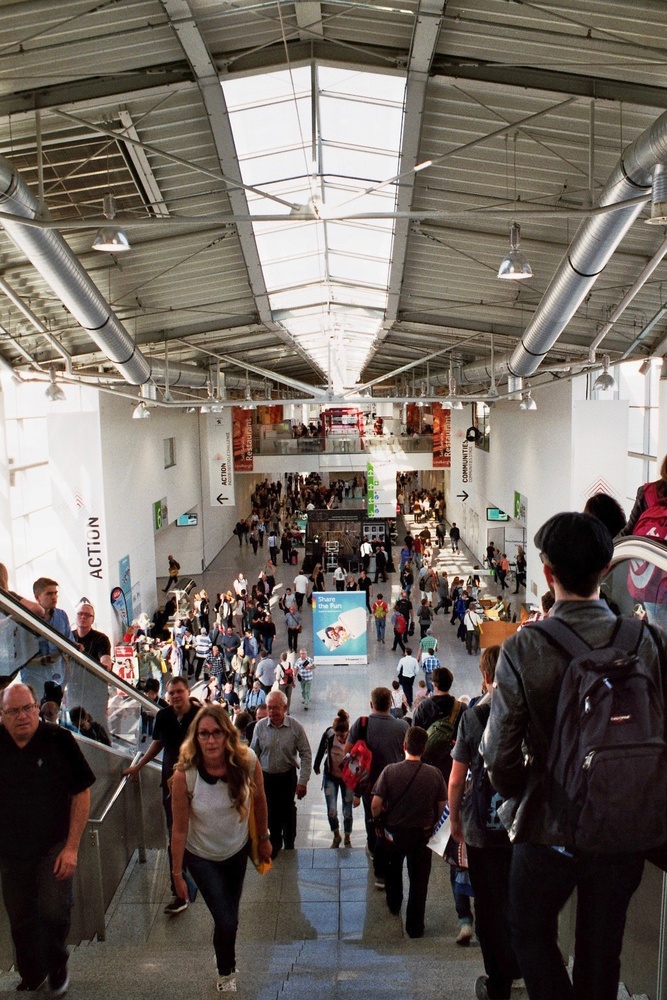Photokina is a juggernaut. Held every two years since 1966 (intermittently before that beginning in 1950), it has long become one of the largest, and arguably the single most important trade fair in the photo industry. Two years is a short enough interval to not miss larger trends, yet long enough to skip over fads, so the biannual trade show offers valuable snapshots that help us understand where the industry at large is moving. Photokina 2016 closed almost four weeks ago. Enough time has passed for things to sink in, so let's look back and contemplate what the most notable trends from this year's show were.
1.) China
The elephant in the halls of the photography industry is growing larger. Chinese manufacturers have been steadily gaining expertise and manufacturing know-how, and more and more of their products are now in spitting distance of bargain-priced offerings by larger, more well-known firms. Where bags and certain kinds of accessories are concerned, in terms of quality, Chinese companies' products are often close enough in quality to some brand name offerings to be real contenders. In this case, Chinese accessory manufacturers benefit from cross-pollination with other industries which have become de facto quality world leaders, such as producers for certain types of rugged clothing. In other realms, there is still some catching up left to do.
To be sure, the Chinese photo industry as a whole can as of yet not compete on equal ground with Japan's. Then again, that was once the situation with German camera manufacturers in relation to Japan. During the 1950s, it was no contest between the likes of Zeiss, Leitz and Rollei and the companies that would later congeal into Nikon, Canon, Olympus, or Minolta. By the 1970s, however, the tables had turned. China is a large market unto itself, and products like recent cheap prime lenses by Yongnuo and Venus Optics (Laowa) or the YI M1 mirrorless camera (as well as YI's action camera products), show that Chinese companies – and not just Chinese manufacturing lines for established firms – can compete, if not yet at the high end, then in the mass market.

More and more, the future of the photography industry looks Chinese
2.) Diversification
GoPro makes a drone now. Nikon has just gotten into the action camera game. Canon is dipping its toes a little deeper into the mirrorless game. Companies are looking to expand into what they perceive to be profitable markets in the future. This, however, is now even more a moving target than it has been already during the past years. The photography industry has seen sped-up change since the digital switchover of the early 2000s. Product categories themselves have shifted, while the overall market for cameras has declined at the same time that people take more and more photos and videos. Smartphones have created a major disruption. For most people, a phone is now the best camera they own, and cameras such as those on the new iPhone 7 series or the Google Pixel can indeed give DSLRs a run for their money under certain circumstances.

Nikon's KeyMission 80 is one of three action cameras the company announced at Photokina
3.) Drones
Photokina 2016 not only saw a growing number of drones exhibited by various manufacturers, but also a dedicated hall in which drones were flown in demonstrations, and where interested attendees could try their hand at flying one. While sales of traditional cameras have declined, those of drones have increased. As that market matures, we will see more niches (professional, prosumer, consumer) filled by an increasing number of products. DJI's Mavic was not yet quite ready for release at Photokina, but it followed soon after. It's a clear signpost on the way of what's to come. There will be out-of-the-box solutions, just as there will continue to be custom-engineered ones. There will be small and cheap drones and large and capable ones, automated ones and those that can be manually operated. Drones enable new views and bring down the cost of aerial photography immensely. To the chagrin of aviation regulation agencies the world over, as such, they will find their way into many a photographer's workflow, and into many a consumer's life. The cultural and legal backlash, of course, is also likely to follow on the heels of an expanding phenomenon. Nevertheless, drones are on the verge of becoming not just an optional, but an essential part of certain kinds of professional photography and videography.

A whole exhibition hall at Photokina 2016 was set aside for drones
4.) Mirrorless Medium Format Digital Photography
For a decade or so, full frame – i.e., the size of a 24x36mm film frame – has been the gold standard for many kinds of photography. To step above that meant catapulting the price for a typical camera plus lenses into five-figures territory. Therefore, medium format digital photography has been out of reach for a majority of photographers. It is also oftentimes impractical and cumbersome. Mirrorless medium format promises to change that. It will allow digital photographers to get closer to the look of, and capture the shallow depth-of-field of the halcyon days of medium format film photography, but without the weight and cost.
Sensor size has always been a limiting factor in digital photography. While today's sensors are leaps and bounds better in terms of resolution, low light performance, and dynamic range than their forebears were just a decade or so ago, there is still demand for larger sensors that can improve on whatever the current standard is. While none of the new medium format cameras attempt to cover the space encompassed by a 6x6 film frame, their sensor sizes are still a considerable step up from the more typical APS-C or full frame sensors found on most DLSRs. No longer will medium format be relegated to super high-priced, specialized camera backs (or Leicas). While Pentax has offered a sub-$10,000 medium format camera for several years, and Hasselblad just scraped in under that price point with its X1D, Fujifilm's announcement of the GFX 50S makes it clear that companies see a market for medium format below the very high end.

Fujifilm hopes to shake up the medium format market with its GFX 50S
5.) Instant Photography
Film clearly is not dead, but most film products at Photokina 2016 did not garner a huge amount of attention. The exception to that rule, as evidenced by crowds gathering around the stands of the Impossible Project, Fujifilm's Instax display, and the Polaroid display of Zinc cameras/printers, was instant photography. Leica also jumped on the instant photo train. The premium brand announced its Leica Sofort at Photokina, an instant camera using the same film as the Instax Mini models. It resembles Fujifilm's Neo Mini 90 and comes with a price tag some $200 above Fujifilm's closest competitor. While other exhibitors of film-based photography products saw meager interest at the fair, Impossible's stand, on a Saturday afternoon (the weekend at Photokina has traditionally been when the fair opens up to the general public) was among the busiest at Photokina. People lined up to have their pictures taken with the company's new I1 camera.
While the professional use of instant photography fell into steep decline with the introduction of digital photography and its possibilities of "chimping" images on camera displays, as well as direct capture setups and software, consumers have continued to take instant photographs. Fujifilm's Instax cameras sold 5 million times in 2015. The new focus of instant photography is amateur users. In line with this is Fujifilm's decision to axe its FP100C professional instant film this year, while also announcing at Photokina that it will introduce a third form factor of its consumer Instax film. The new format will be a square image somewhat smaller than the original square instant images made by of Polaroid's SX-70 and 600 type film which became popular in the 1970s and 1980s. It remains to be seen whether the new format, and possibly new, more feature-laden cameras using the Instax formats can also capitalize on the trend among professional wedding and event photographers to provide instant photos as part of their service.

Everything old was new again at the Impossible Project's stand
A Trend about Photokina: Shrinking While Growing
During its 2008 incarnation, Photokina housed almost 1,600 exhibitors. That year, it saw 169,000 visitors. In 2016, the number of exhibitors was less than 1,000, while visitor numbers had risen to about 191,000. While photography and moving images (which have always been a part of Photokina – the "kina" in its name refers to cinematography) are becoming ever-larger parts of people's lives, the amount of money to be made in selling cameras to the masses will likely remain limited as smartphones boast ever better image-taking capabilities. Yet, it appears that people are increasingly interested in imaging technology, if only as a part of other devices.

More people visited while fewer companies exhibited at Photokina 2016
Are there any other notable trends you have seen at Photokina? What should we watch for in 2018?






